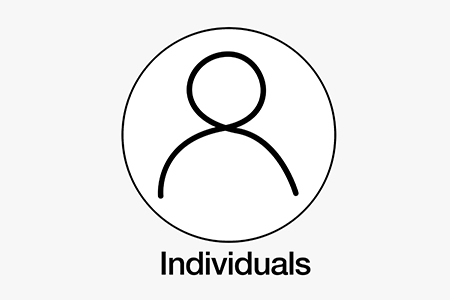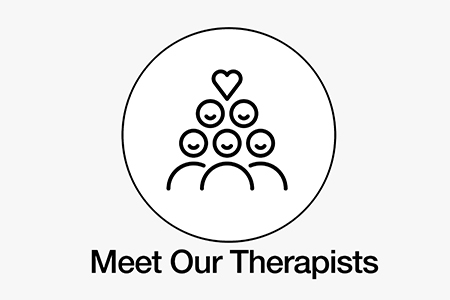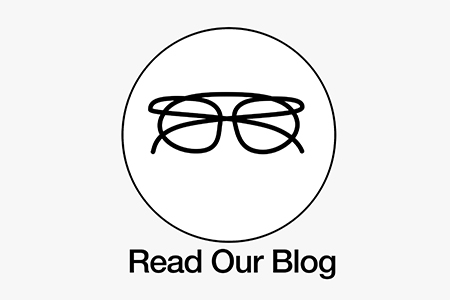



we are a unique collective of exceptional psychotherapists in the bay area
we are a unique collective of exceptional psychotherapists in the bay area
We offer psychotherapy services to individuals, couples and families.
Our therapists are trained to work with a variety of topics including:
Anxiety and Depression
Grief and Loss
LGBTQQI Concerns
Body Image
Shame
Existential Inquiry
Post Traumatic Stress Disorder
Disordered Eating
Substance Abuse / Addiction
Vocational Direction
Relationship Distress and Marital Counseling

why choose us?
why choose us?
“Awareness is required for learning and change. The stronger the awareness, the greater the change. ”
Our mission is to promote healing, aliveness and authenticity in our communities and society at large by teaching and providing Gestalt psychotherapy to our clients, colleagues and interns.
If you want a run of the mill therapist, we may not be for you. Our work is unique in that it is active, creative and holistic. If you're looking for someone to support lasting change in your life, and expanded self-awareness, make an appointment today!

explore our blog
explore our blog
WRITTEN ON 24 MARCH 2023 FROM ~34,000 FEET IN THE AIR
This blog post has been in the back of my mind for a wee while. A 10 hour flight to Ireland without any inflight entertainment has finally tipped me over the edge into actual writing.
My mom, Mairin passed away in May 2020 unexpectedly. I was almost 5-months pregnant with our second baby at the time.
Covid was a full global phenomenon then. We flew to Ireland from San Francisco via a couple of empty flights through Boston. We were traveling with our almost two-year-old during a time when traveling wasn’t advised but I deeply felt the need to be there for the funeral.
Mairin was a good friend to so many people but the funeral attendance numbers where capped at 20 or so close family members. It felt really strange and surreal. Most people had to stand outside the church in the rain to be present. And yet, they were there, standing in the rain for her.
When Humanistic Psychology was first founded in the early sixties by Abe Maslow, Rollo May, Carl Rogers, Fritz Perls, and others, it was defiantly individualistic in its approach while playing a role in putting an end to an era of stifling social conformity. As the fifties faded and the bonds of conformity loosened, the championing of individualism faded within the Humanistic movement. By the eighties the focus had shifted to the interpersonal aspects of psychotherapy. This was clearly manifested in the Gestalt branch of humanistic psychology where the individualistic "You do your thing, I do my thing" ethos of Fritz Perls was largely replaced by the interpersonal approach of Lynne Jacobs, Gary Yontef, and Richard Hycner.
I was inspired to write this essay after viewing the TV series "The Leftovers" and the N.Y. Times interview of its creator Damon Lindelof. The series takes place in a dystopian U.S.A. after two percent of humanity has suddenly vanished. Nobody knows where they went; if and when they'll return; and whether or not a similar event will recur.
As a result people are left grieving, bewildered, and profoundly uncertain about the why of what has happened. The many ways individuals and groups respond to this unforeseen, cataclysmic event are depicted. They include: denial and normalization; apocalyptic cults; and messianic beliefs.
I have been a Gestalt practitioner for fifty years, and am glad of it. Not only because my particular values and abilities are compatible with the practice of Gestalt, but because the approach itself is grounded in experiencing what is. One of my favorite sayings is: reality is an infinity of worlds waiting to be seen. Gestalt is directly tied into reality, and as such becomes more complex as it changes over the years.
I have seen it develop since the sixties, perhaps the most important change being the shift from intra-psychic to inter-personal Gestalt.
The paintings of episodes from the ancient Hindu epic The Ramayanathat I viewed at the Asian Art Museum impacted me in a number of ways.
First, I derived aesthetic pleasure from seeing the exquisite renderings themselves. Some of the details were so fine that I wondered whether the artists used just a single hair on their brushes in order to achieve such results. The variety and nuances of the colors was amazing.
Time was made visible in many paintings. The past, present, and future of a particular event were depicted along a horizontal axis. You follow the chronology of the event and observe no special emphasis on one time or the other.
I am a straight, white, cisgendered woman living in the United States. I wrote his article in hopes that other people might recognize themselves in my experience, including any and all persons who feel othered and oppressed by the current system of patriarchy. My aim is to encourage and empower. I am tired of being scared and of tiptoeing around the perceived expectations of a society that caters to straight, white cis-men.
I was born a real, live human baby with flesh and bones and blood. I was born with a vagina.
As most of the people who were born on this planet in the last several millennia, I was born into a patriarchal system. Very simply put, a patriarchal system is built on the belief that men hold more power and are distinctly more valuable than others, namely women
Ich bin eine in den USA lebende heterosexuelle, cis-geschlechtliche weiße Frau. Ich schreibe diesen Artikel in der Hoffnung, dass andere sich in meinen Erfahrungen wiedererkennen können, einschließlich aller Personen, die sich, ähnlich wie ich, in dem gegenwärtigen patriarchalen System benachteiligt und unterdrückt fühlen. Mein Ziel ist die Unterstützung und Stärkung anderer. Ich habe es satt, Angst zu haben und auf Zehenspitzen um die wahrgenommenen Erwartungen einer Gesellschaft zu gehen, die auf die Bedürfnisse von heterosexuellen, weißen Cis-Männern ausgerichtet ist.
Ich wurde als echtes, lebendes Menschenkind aus Fleisch und Blut und Knochen geboren. Ich wurde mit Scheide geboren.
Wie die meisten Menschen, die in den letzten paar Jahrtausenden auf diesem Planeten geboren sind, bin ich in einem patriarchalen System geboren.
I never thought I would become a country western dancer.
The music was never my favorite, yet it has become a passion of mine. If I had to explain why, I would say it is because in couples dancing we can make contact that is harmonious with the music, with the space and especially with each other. Sure, I have my moments of individuality, which I get to express in a line dance flourish or in the number of times I spin my partner, but its all a part of a community coming together to celebrate our lives, our individuality and our connection to one another.
I was speaking with one of my clients earlier this week about what it feels like inside when her
fear of abandonment gets triggered. I listened to her closely as she described an experience of
psychological, physical and emotional discomfort and suggested naming this experience as
“meeting her edge.” “NO!” she said, the word “edge” didn't nearly describe deeply enough the
phenomenon of being pushed to her internal limit. So - again I listened and this time carefully
chose my words “YES,” I said “what I am am talking about is your Oh My God, holy shit, mother
fucking edge.” “YES” she said, That’s it!”
Whether a society is feudal, capitalist, or socialist, it needs the glue of shared values and ideas in order to coalesce and continue functioning. And it needs novelty in order to evolve. Novelty has its roots in subjective particularity. Specifically, in order to evolve society needs individuals who see what hasn’t been seen before and follow that vision.
Each psychotherapeutic modality is the result of an individual expressing their unique take on human consciousness. It’s the result of a subjective particularity that saw what had not been previously seen.
Arthur Schopenhauer(1788-1860) was a German philosopher, author of On the Suffering of the World, and an angry young man who matured into an angry old one. Here’s a quote from his chapter On Thinking for Yourself :
“Reading is merely a surrogate for thinking for yourself; it means letting someone else direct your thoughts”
...and another from Aphorisms:
“The discovery of truth is prevented most effectively, not by the false appearance things present which lead us into error, nor directly by weakening of the reasoning powers, but by preconceived opinions, by prejudice..”
Being with the emergent is not the same thing as being with the here and now - and it is.
What’s emerging now is this sentence I’m typing about my now. But I could just as well be writing about an email I received yesterday from a friend. What we are doing is always being done here and now, but our consciousness can be focused on any time or place.
For me the Gestalt challenge is not be here now. It is be with the emergent figure in your consciousness.
That’s sometimes harder to do than be here now.
To develop competency working with children, I have practiced one-on-one psychotherapy with kids at the elementary level for two years, and now, I’m working with teens at a high school wellness center.
As with most other mental health placements, there can be a lot of emotional heaviness to the work. Students tell me about their uncaring parents, their siblings in jail, the friends who have betrayed them, their stress, fear, boredom, and uncertainty about the future. Although I feel glad to be able to connect with teens who struggle, it can be difficult not to feel dampened by their pain.
New Year’s Eve is that special time of year where we resolve to become less like ourselves and more like other people. Better people. More suitable people. Perfectly hydrated, voraciously reading, paleo dieting people.
It’s a time-honored tradition in which we salute the passing year by piling unrealistic hopes and expectations on the back of the year to come, and we look to the future with a gut-churning blend of happy optimism and indestructible self-loathing.
What do Jim Jarmusch’s movies and self-esteem have to do with one another? Maybe nothing. Maybe everything! I cant stop re-watching all his movies this holiday during my down time, and the topic of self-esteem (as it is one of the 5 core issues, along with boundaries, authenticity, self-care and moderation), of course keeps coming up as people navigate the reflective and evocative holiday season.
How many ways can you split a noodle, nation, person? The author chose to title his debut novel “The Sympathizer” after the protagonist (who narrates the story) but he could have just as easily named it “The Bastard,” an appellation used throughout the book by the narrator and others to describe himself. In this case the epithet isn’t used to denote character… but rather brings attention to his mixed (split) ancestry. His father was a French priest; his mother Vietnamese.
This instruction from Jim Jarrett rings through my mind as I crouch over in preparation for my work onstage with my partner. I wrestle with my powerful superego, which is currently asking, no screaming, the question AM I GOOD ENOUGH? I shove the introject out of my mind as the vulnerability of preparing in front of my 11 classmates and, especially, Jim weighs on me. I close my eyes, cover my ears, and rock gently back and forth, taking myself through the steps of the activity I have prepared to do on stage.
Recently I’ve seen art and historic forces reflecting each other in dramatic ways. The HBO series “The Leftovers” and the best-selling novel by Elena Ferrante “The Story of the Lost Child” are the examples from art. The historic example is the current flood of humanity making its way from the Middle East to Europe.
Both Ferrante’s novel and “The Leftovers” are concerned with vanishings. In the novel, a beloved four-year old is last seen on a Neapolitan street corner, and then never seen again. In the TV show, two percent of the world’s population inexplicably vanish in an event called “The Departure”.
Just let the author’s name roll off your tongue a few times. That’ll prepare you for a voyage to exotic African locales. However, by the time you’ve completed this close-to-six-hundred page novel what has seemed exotic will have taken on a new normalcy, while aspects of London and America may seem strange and new to you.
This novel is hefty in many ways besides length . Adichie doesn’t hesitate to jump into issues of race; class; tribalism; cross-cultural conflict and gender. The protagonist Ifemelu writes blogs with headings such as :“Understanding America for the Non-American Black: What Hispanic Means”. They’re scattered throughout the book and are witty, perceptive, and pull no punches.


























We are deeply saddened to inform you that Lucanna (Lu) Grey, MA, LMFT, psychiatric nurse, psychotherapist, writer, teacher, and supervisor, Professor Emeritus of the Integral Counseling Psychology program and former Director of Church Street Integral Counseling Center died Wednesday September 17th, 2025, surrounded by her family after a long illness.